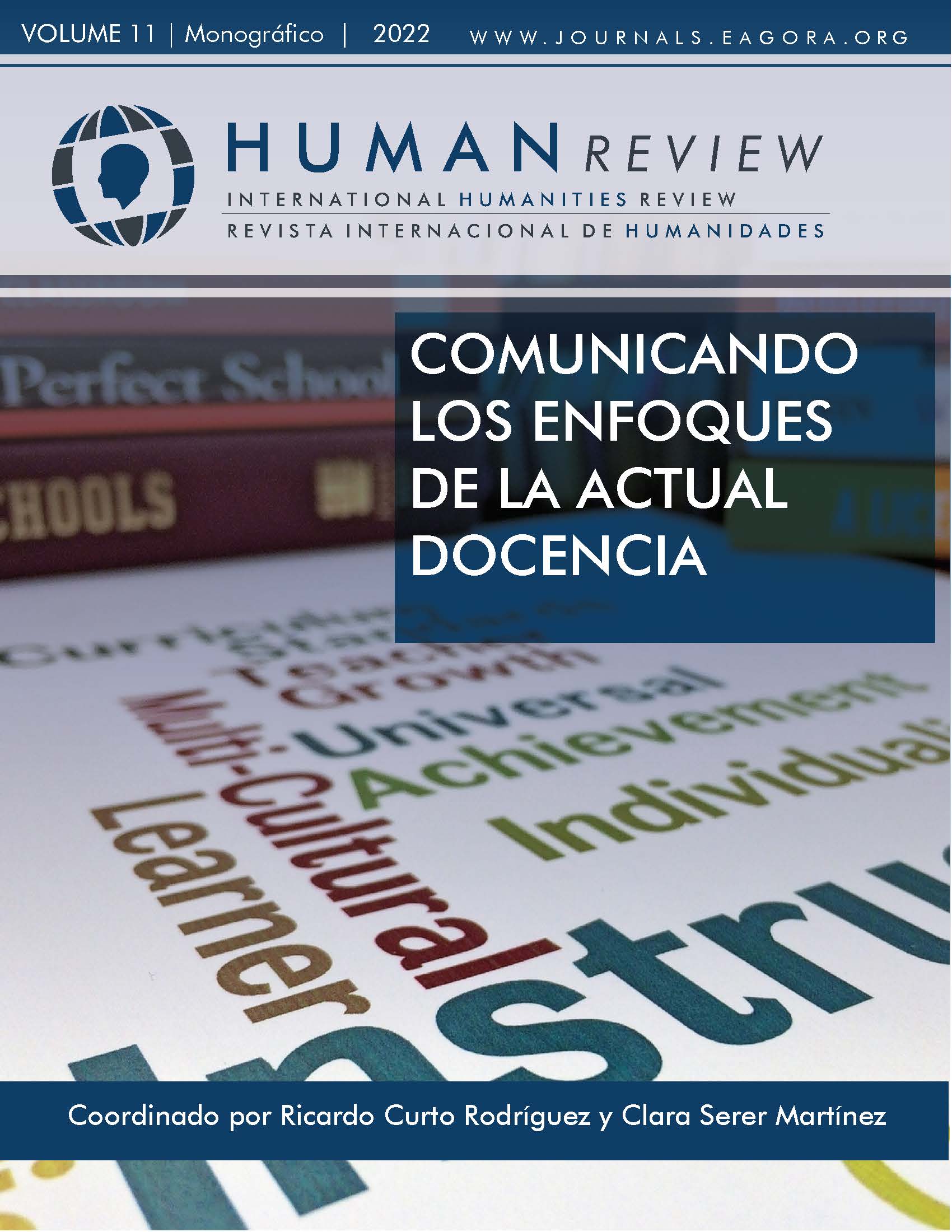Peer interaction and written input
Influence of written input on the oral interactions of German as a foreign language learners
Keywords:
Foreign language teaching, Foreign language acquisition, Classroom research, Peer interaction, Input modality, Education, Pedagogical strategiesAbstract
The present study investigated the influence of written input on oral peer interactions in a German as a foreign language classroom. Learners participated in six interactive classroom activities. One group of fourteen learners was exposed to oral input during the activities and the other group of fourteen learners, apart from oral input also received written input. Oral interactions were audio recorded and transcribed in order to analyse the frequency and nature of language-related episodes (LREs). The results suggest that written input influences oral interactions.
References
Adams, R. & Oliver, R. (2019). Teaching through peer interaction. Routledge.
Adams, R. & Ross-Feldman, L. (2008). Does writing influence learner attention to form? En D. Belcher, y A. Hirvela (Eds.), The oral-literate connection: Perspectives on L2 speaking, writing, and other media interactions (pp. 243-265). The University of Michigan Press.
Amo-García, N. (2021). The Impact of Task Modality on Collaborative Tasks in English Foreign Language Contexts: Language-Related Episodes [Tesis doctoral]. Universidad Autónoma de Barcelona. https://ddd.uab.cat/pub/tfg/2021/249145/AmoGarciaNatalia_TFG2021.pdf
Choi, H. & Iwashita, N. (2016). Interactional behaviours of low-proficiency learners in small group work: Pedagogical potential and research agenda. En M. Sato, y S. Ballinger (Eds.), Peer interaction and second language learning: Pedagogical potential and research agenda (pp. 113-134). John Benjamins. https://doi.org/10.1075/lllt.45.05cho
Consejo de Europa (2020). Marco común europeo de referencia para las lenguas: aprendizaje, enseñanza, evaluación. Volumen complementario. Servicio de publicaciones del Consejo de Europa.
Dörnyei, Z. (2007). Research methods in applied linguistics: Quantitative, qualitative and mixed methodologies. Oxford University Press.
Ellis, R. (2015). Understanding second language acquisition (2ª ed.). Oxford University Press.
García-Mayo, M. P. & Azkarai, A. (2016). EFL task-based interaction: Does task modality impact on language-related episodes? En M. Sato, y S. Ballinger (Eds.), Peer interaction and second language learning: Pedagogical potential and research agenda (pp. 241-266). John Benjamins. https://doi.org/10.1075/lllt.45.10gar
Gass, S. M., Mackey, A. & Ross-Feldman, L. (2005). Task-based interactions in classroom and laboratory settings. Language Learning, 55(4), 575-611. https://doi.org/10.1111/j.0023-8333.2005.00318.x
Kim, Y. (2008). The contribution of collaborative and individual tasks to the acquisition of L2 vocabulary. The Modern Language Journal, 92(1), 114-130. https://doi.org/10.1111/j.1540-4781.2008.00690.x
Kim, Y. (2012). Task complexity, learning opportunities, and Korean EFL learners’ question development. Studies in Second Language Acquisition, 34(4), 627-658. https://doi.org/10.1017/S0272263112000368
Kim, Y. (2015). The role of tasks as vehicles for language learning in classroom interaction. En N. Markee (Ed.), The handbook of classroom discourse and interaction (pp. 163-181). Wiley-Blackwell. https://doi.org/10.1002/9781118531242.ch10
Kirchhoff, N. (2021a). Input modality in oral peer interactions: instructional conditions in the German as a foreign language classroom [Tesis doctoral inédita]. Universidad de Cádiz.
Kirchhoff, N. (2021b). The impact of input modality on collaborative peer interaction. En J. J. Gázquez-Linares, M.M. Molero-Jurado, A. Martos-Martínez, A. B. Barragán-Martín, M. M. Simón-Márquez, M. Sisto, R.M.del Pino-Salvador, y B. M. Tortosa-Martínez (Comps.), Innovación docente e investigación en arte yhumanidades: Avanzando en el proceso de enseñanza-aprendizaje (pp. 593-604). Dykinson, S. L.
Loewen, S. (2020). Introduction to instructed second language acquisition (2ª ed.). Routledge.
Loewen, S. y Sato, M. (2018). Interaction and instructed second language acquisition. Language Teaching, 51(3), 285-329. https://doi.org/10.1017/S0261444818000125
Philp, J. J., Adams, R. & Iwashita, N. (2014). Peer interaction and second language learning. Routledge.
Sato, M. y Ballinger, S. (Eds.) (2016). Peer interaction and second language learning: Pedagogical potential and research agenda. John Benjamins.
Storch, N. & Aldosari, A. (2013). Pairing learners in pair work activity. Language Teaching Research, 17(1), 1-18. https://doi.org/10.1177/1362168812457530
Suzuki, W. & Storch, N. (2020). Introduction. En W. Suzuki, y N. Storch (Eds.), Languaging in Language Learning and Teaching: A collection of empirical studies (pp. 1-16). John Benjamins. https://doi.org/10.1075/lllt.55.int
Niu, R. (2009). Effect of task-inherent production modes on EFL learners’ focus on form. Language Awareness, 18(3-4), 384-402. https://doi.org/10.1080/09658410903197256
Ziegler, N. & Bryfonski, L. (2018). Interaction-Driven L2 Learning: Advanced learners. En P. Malovrh, y A. Benati (Eds.), The Handbook of Advanced Proficiency in Second Language Acquisition (pp. 94-113). Wiley-Blackwell. https://doi.org/10.1002/9781119261650.ch6
Referencias de imágenes
Andi O. (n.d.). Trip to Prague [Photograph]. FreeImages. https://www.freeimages.com/es/photo/trip-to-prague-1217831
Eisenberg, J. D. (2004). Amusement Park [Photograph]. FreeImages. https://www.freeimages.com/es/photo/amusement-park-1478764
Huszár, M. (2004). Tough at the Top [Photograph]. FreeImages. https://www.freeimages.com/es/photo/tough-at-the-top-1402244
Kucinski, P. (n.d.). Trip [Photograph]. FreeImages. https://www.freeimages.com/es/photo/trip-1497498
Navarro, J. L. (2006). Zoo Elephants [Photograph]. FreeImages. https://www.freeimages.com/es/photo/zoo-elephants-1389904
Torterolo, M. (2005). Day of Beach [Photograph]. FreeImages. https://www.freeimages.com/es/photo/day-of-beach-1407654

